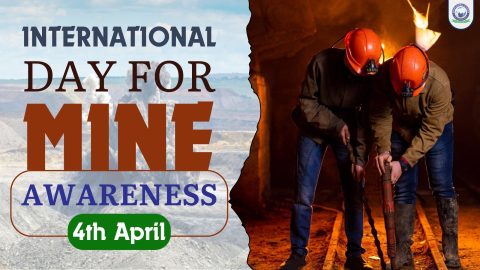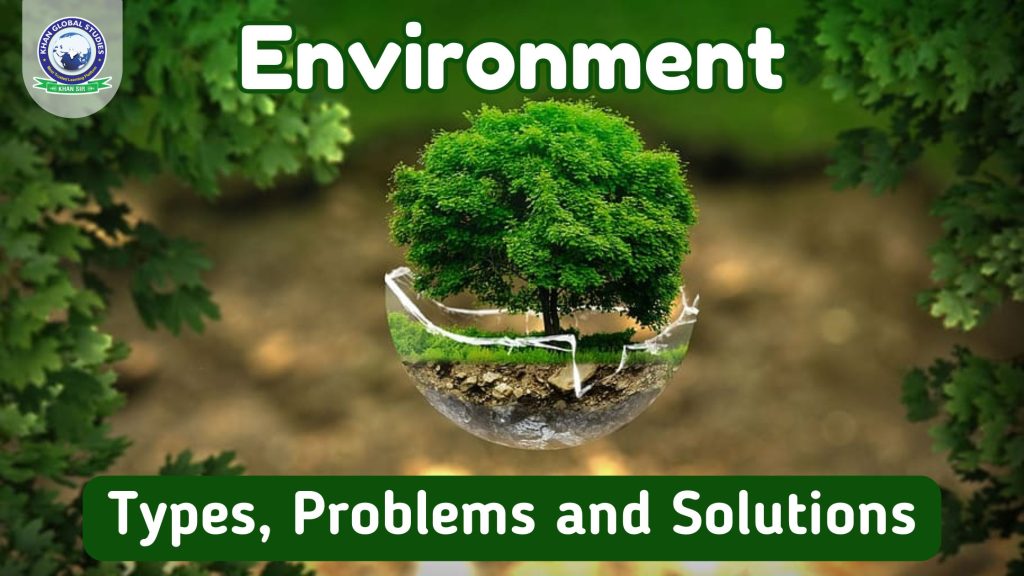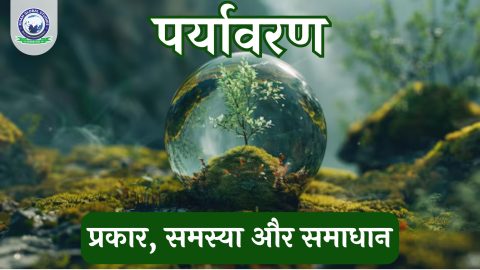Environment is a Hindi word formed by the combination of two words. “Pari” which is around us, “Avaran” which surrounds us. That is, that which is always present in every organism and around us.
Environment is the collective unit of all those physical, chemical and biological factors that affect the population of any organism and ecosystem and determine their form, life and existence. In simple words, it is a unit made up of a group of all the biological and abiotic elements, facts, processes and events around us that affect our lives.
Environment is the basis of human life and a necessary condition of existence. This term generally refers to the group of air, water, soil, vegetation, wildlife and other living beings of the earth. Environment not only structures the natural resources, but it also determines the complex relationships between organisms and humans. Life cannot be imagined without it.
“Nature Always wears the colors of the Spirit.”
-Ralph Waldo Emerson
Types of Environment
The environment is of two types- Physical Environment and Non-Physical Environment
- Physical Environment: What we can see and touch, what is around us in front of our eyes, whose beauty we can feel with our eyes or by touching, is called physical environment. In earlier times, people used to emphasize on how to keep them beautiful, they used to take care of them, but today’s people are not interested in it, they are busy cutting forests and building high-rise buildings, malls, and roads as per their convenience, while they do not know how much all this is harming the environment.
- Non-Physical Environment: We can feel the non-physical environment, but cannot see it, it is present all around us. We can feel it in our customs, religion, faith, belief, etc. If seen, it is getting worse in today’s time, people are violating faith, and customs without thinking anything.
Environmental Condition
Today the environmental condition is extremely worrying. Industrialization, urbanization, deforestation and modern lifestyle have put the environment in serious crisis. The temperature of the earth is constantly increasing due to the excessive increase of carbon dioxide, methane and other greenhouse gases in the atmosphere, which we know as ‘global warming’. Due to this, glaciers are melting, sea level is rising and there are irregularities in the weather cycle.
Climate change is affecting not only the environment but the entire humanity. Agricultural production is being affected due to rising temperatures and drought. Many species are becoming extinct, while the water crisis is deepening in many places.
Major Problems Harming the Environment
- Air Pollution: Due to excessive use of industrial factories, vehicles and fossil fuels, the amount of harmful gases in the atmosphere is increasing. This not only poses a threat of global warming but also harms human health.
- Water Pollution: Rivers, lakes and seas are getting polluted due to excessive use of industrial waste, chemical fertilizers and plastic. This is causing the quality of drinking water to deteriorate and the existence of aquatic life is at risk.
- Soil Erosion: Excessive cultivation and the use of chemical fertilizers and pesticides is reducing the fertility of the soil. This is reducing food grain production.
- Deforestation: Indiscriminate cutting of forests not only threatens biodiversity but also increases climate change and the greenhouse effect.
Resource Depletion
Resource Depletion means resources that gradually diminish or get exhausted. Natural resources, such as water, coal, petroleum, minerals, flora and fauna are available in limited quantities. When they are used faster than their supply, this situation is called resource depletion.
Causes of Resource Depletion
- Overexploitation: Industrialization, urbanization and increasing population are leading to excessive use of resources. Unnatural farming and deforestation: The need for more land for agriculture is leading to deforestation, which is causing loss of biodiversity and disturbing the balance of resources.
- Excessive Energy Consumption: Non-renewable energy sources such as coal, oil and natural gas are being overexploited, which may get exhausted in the future.
- Climate Change: Climate change is negatively affecting the replenishment capacity of natural resources.
Climate Change
Climate change has become the main problem of today, far from solving it, people are making it worse. Due to so many changes happening in nature in our lives, we are harming our environment. The changes in the weather due to climate change are harmful to our crops, animals and nature.
Efforts to Solve
It is very important to solve environmental problems and collective efforts are needed for this.
- Reuse and Recycling: By reusing and recycling plastic and other items, we can reduce waste. This will help in reducing environmental pollution.
- Forest Conservation: Efforts to stop deforestation and plant new trees should be promoted. This will control the level of carbon dioxide and protect biodiversity.
- Use of Clean Energy: We should reduce the use of polluting fuels like coal, petrol and diesel and move towards clean energy sources like solar, wind and water energy.
- Public Awareness: Most importantly, we need to spread awareness among people towards the protection of the environment. People should be told about the importance of environmental protection through education, workshops and media.
Conclusion
It is our collective responsibility to protect the environment. If we do not take steps to save it today, then the coming generations will have to face a serious crisis. Every person, organization and government will have to work together to solve environmental problems. We have to maintain balance with nature, so that both we and our earth can remain healthy and safe.
So let us all commit ourselves to protecting our environment and start big changes with small steps.




